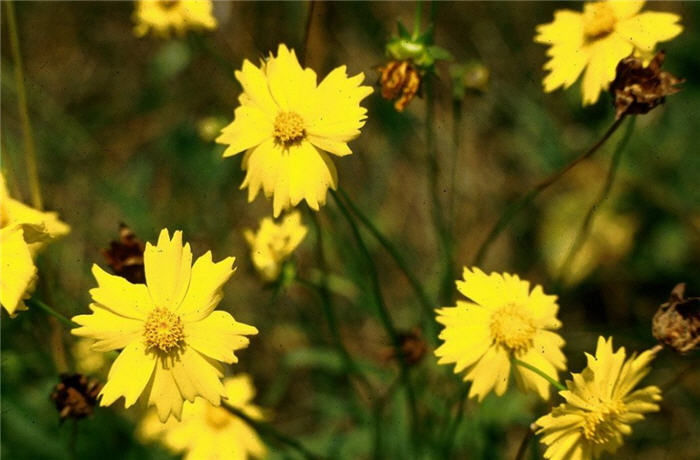| Botanical Name: Coreopsis lanceolata | |
| Common Name: Lanceleaf Coreopsis |

-
Anatomy
-
Culture
-
Design
Plant Type
Perennial
Height Range
1-3'
Flower Color
Yellow
Flower Season
Spring, Summer
Leaf Color
Light Green
Bark Color
n/a
Fruit Color
n/a
Fruit Season
n/a
Sun
Full
Water
Medium
Growth Rate
Moderate
Soil Type
Sandy, Clay, Rocky
Soil Condition
Average, Poor, Well-drained, Dry
Soil pH
Neutral
Adverse Factors
n/a
Design Styles
English Cottage, Meadow, Mediterranean, Ranch
Accenting Features
Showy Flowers
Seasonal Interest
Spring, Summer
Location Uses
Entry, Perennial Border, Patio, Swimming Pool, Walkways, With Rocks
Special Uses
Container, Cut Flowers, Mass Planting, Naturalizing, Small Spaces
Attracts Wildlife
Butterflies
Information by: Stephanie Duer
Photographer: Mountain States Nursery
Photographer: Mountain States Nursery
-
Description
-
Notes
Lanceleaf coreopsis have bright yellow flowers with lobed petals arrayed like daisies. Blooms late spring to mid to late summer (deadheading will help to prolong the season). Plants grow about 1 to 2 feet tall and maybe 18 inches wide, with the foliage mostly concentrated near the base. there are many cultivars of this species available, varying in height and color. Use in perennial borders or more naturally styled settings.
Grow in well-drained, slightly loamy to sandy-loam soils in full sun. Plants tolerate drier conditions than do the grandifloras. Prompt deadheading of spent flower stalks can be tedious for a large planting, but does tend to encourage additional bloom. In optimum growing conditions, plants will spread in the garden over time by stolons to form an attractive ground cover, but spread is easy to check.